The opening line of President Obama's victory speech -- "Tonight, more than 200 years after a former colony won the right to determine its own destiny, the task of perfecting our union moves forward" -- felt ironic in Puerto Rico. On Election Day, the U.S. territory held its fourth non-binding referendum since 1967 on the question of status.
To call Puerto Rico a U.S. Commonwealth, a term used in distinct juridical ways by other countries and states, euphemistically softens the power relations between the two countries, which began with a U.S. invasion during the Spanish-Cuban-American War, and became a Free Associated State in 1952.
Advocates of Statehood for Puerto Rico declared a plebiscite victory, making headlines worldwide -- as far as Taiwan -- though the unusual mechanics of the ballot were largely ignored. Now the 61 percent vote for statehood is being more widely questioned.
This discrepancy inheres to the ballot design, which the U.S. Congress had stipulated must contain the current status as a choice. The first part consisted of a Yes/No question, which contained the current status of U.S. territory: Do you agree to maintain the current political territorial status? Here "No" won by nearly 54 percent. For the first time since the first of four plebiscites were held in 1967, a clear, simple majority voted against the current status and for some form of decolonization.
"Mas claro no puede cantar el gallo," opined Rogelio Torres Piña in a Facebook status update, with a popular expression featuring a rooster that sings clear as a bell.
For those that voted No, three options followed in the second part of
the ballot: statehood, independence, or sovereign free associated
state. The official results were 61 percent, 5.5 percent, and 33.3
percent, respectively. At least 26 percent left the second question
blank. The option of continuing current free associated status,
without augmented sovereignty, was not among the choices for those who
voted Yes on the first question. Being a non-binding vote, the
ultimate authority for granting statehood remains with the Congress.
The most common response heard about the plebiscite was a dismissive "eso no va por ningún la'o" or "it's not going anywhere," reflecting cynicism that the U.S. would admit a Hispanic, Spanish-speaking state to the union (bilingualism is reportedly 19 percent). Some noted that Governor Luis Fortuño, who vigorously promoted statehood, lost the election, casting more doubt on the ballyhooed results of the two-tiered question.
The statehood "win" of 61 percent did not include the more than 470,000 ballots left blank. Had "none of the above" been an option as in the last plebiscite in 1998, then the statehood vote would have been 45 percent, well shy of the simple majority of 51 percent required to petition the U.S. Congress for statehood. Although legally the votes left blank do not compute into the official percentage, the 61 percent reported does not accurately represent the preference for statehood.
The 61 percent statehood vote trumpeted since has already been questioned because the second part of the ballot did not include the current Free Associated State status (known in Spanish as ELA or Estado Libre Asociado) as it was established in 1952, under the tutelage of the Popular Democratic Party (PDP) and Puerto Rico's first elected governor Luis Muñoz Marín. Many ELA supporters voted Yes to continue the current status on the first question, and favor permanent union with the U.S., without full integration of statehood.
Those who favored changes that would add sovereignty to the existing juridical status, and are called soberanistas, voted for the third option. Under the existing ELA, Puerto Rico competes internationally with its own Olympic Team and Miss Universe beauty contestants. With a more sovereign ELA, Puerto Rico perhaps could also conduct its own international trade and relations.
More traditional and conservative ELA supporters left the second question blank, as urged by leaders within the Popular Democratic Party, as a protest to delegitimize the process, despite the risk that a blank ballot could be fraudulently filled. In addition, more than 17,700 ballots were purposefully submitted defaced or destroyed, and also did not count.
"Es una mogolla," said two sources, which in local parlance means it's a real mess. As there was no certain way to officially award the blank votes to ELA supporters.
Those who voted No against the current status in the first question,
in the second question split between statehood and independence, with
independence posting just over 4 percent. Both political movements
refer disparagingly to the current status as colonial, though
statehood or annexation is perceived as surrendering Puerto Rico's
long struggle for independence, often repressed and persecuted
throughout the 20th century.
Yet the pro-Independence plebiscite results do not fully capture the movement. As is their custom, the militant Nationalist Party boycotted the elections and plebiscite, and consider it an illegitimate colonial process, an opinion shared by small socialist groups, such as Movimiento Socialista de Trabajadores (Socialist Workers Movement). Former political prisoner Rafael Cancel Miranda, the last of four surviving Nationalists who opened fire on the U.S. Congress in 1954, deemed the plebiscite "a farce."
More moderate and influential independence groups such as the Movimiento Independentista Nacional Hostosiano (MINH), with some 3,000 members, urged a boycott of just the plebiscite, and endorsed candidates crossing party lines from the Puerto Rican Independence Party (Partido Independentista Puetorriqueño or PIP). Three new alternative parties from the left appeared, a sign of the deepening economic crisis and dissatisfaction with the political system.
Julio Muriente, one of three co-presidents of the MINH, which is not a party, questioned the PIP strategy to focus on voting No with statehood in the first question. "I think as independentistas we have to ask, which is more important to defeat, ELA or statehood?"
The scheduling of the plebiscite with gubernatorial elections was widely interpreted as a ploy to help the current pro-statehood governor, Luis Fortuño, also a U.S. Republican. Despite the advantage of a historically fragmented polity, Fortuño lost Tuesday's election by a slim margin to his chief opponent, Alejandro Garcia Padilla of the pro-status quo PPD party. Padilla's victory owes largely to pro-independence voters who were vehemently anti-Fortuño and crossed parties, called melones for the green and red colors of each party. Fortuño had fired nearly 30,000 public employees, expanded and stacked the Supreme Court, targeted the premier public university with crippling cuts, and instituted repressive policies that pitched the country into a civil rights crisis.
While Fortuño's loss may belie the 61 percent statehood results, a vote for a party candidate may not translate into a status preference, as many may vote according to family custom, or to safeguard their jobs, as the government is the country's largest employer, and political discrimination a long-standing problem.
Interpretations vary on what would be the U.S. reaction to the official "pro-Statehood" result. PIP faithful who rallied behind a No in the first question maintain that a statehood petition to the U.S. Congress would be rejected, thereby creating a juridical crisis that would end up in independence. "It would go down like the Titanic," said Rafael Ruiz Ayala, an attorney and PIP supporter. Statehooder Carlos Colón de Armas, a University of Puerto Rico professor of business administration, disagreed and added that he's never believed in Congressional rejection, and less so now.
Indeed the panorama has perhaps shifted in the U.S., now the second largest Spanish speaking country in the world, with Puerto Ricans as the second largest Latino group at 4.6 million, and with President Obama winning 71 percent of the Latino vote.
Two of the three senior Puerto Rican representatives in the U.S. Congress, all Democrats, New York's Nydia Velázquez and Chicago's Luis Gutiérrez, criticized the plebiscite results as distorted. New York's José Serrano promised dialogue. A relatively new Republican Puerto Rican representative, Raúl Labrador of Idaho, was elected in 2010. Even hailing from a sparsely populated state, Labrador has more power than Puerto Rico's pro-statehood Resident Commissioner Pedro Pierluisi, who can advocate but not vote in the U.S. Congress on behalf of the 3.6 million U.S. citizens who live on the island.
Because Puerto Rico is more populated than at least 20 other states, and despite a current migratory exodus, statehood would translate into five to seven representatives and two senators, plus presidential electoral college votes. Puerto Ricans were granted U.S. citizenship in 1917, in time to draft them into WWI, and have served in every U.S. conflict since.
Fortuño has tried to sell Republicans on statehood by claiming Puerto Rican voters would support the GOP, and respond conservatively to such hot button issues as abortion or gay marriage. At home, Fortuño sells statehood with promises of increased federal aid. Such double discourse is "a tough sell," said political scientist José Javier Colón Morera of University of Puerto Rico.
The poverty rate in Puerto Rico is 45 percent, more than double Mississippi's, and experts claim socioeconomic factors would trump so-called Christian conservatism, translating into support for Democrats.
Roughly 36 percent currently receive federal aid such as food stamps, up from 27 percent four years ago, according to UPR's Linda Colón, who has authored two books on poverty in Puerto Rico. She notes that statehood support cuts across all social classes, extending from welfare recipients to professionals and millionaires with ties to multinational corporations.
Sectors profiting under the current scenario impede change, said Argeo Quiñones, an economist at University of Puerto Rico. Shifting from an economy that favors multinationals to one that cultivates entrepreneurship, local business, and community initiatives "would require a radical transformation in social relations," he added, "which a change in status would not automatically grant."
"We are at a crossroads, and temporary measures no longer hold up," he concluded.
